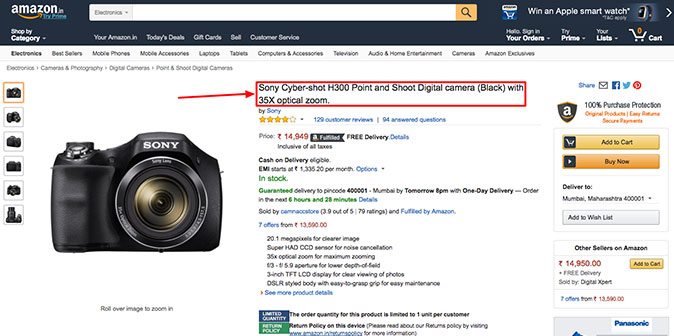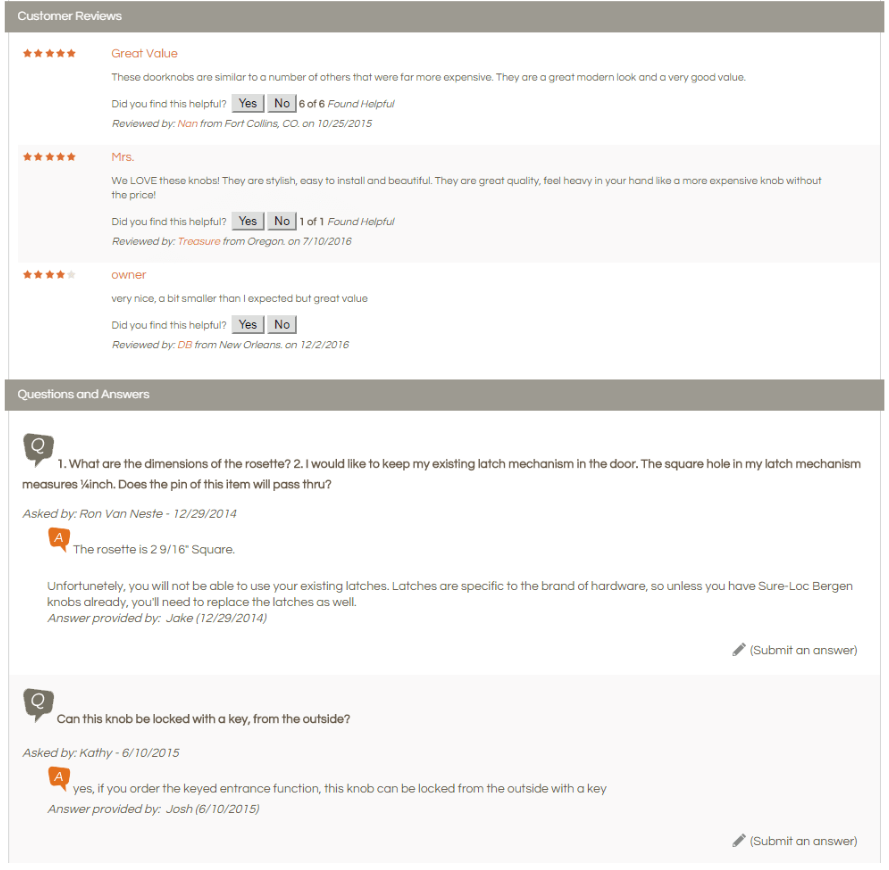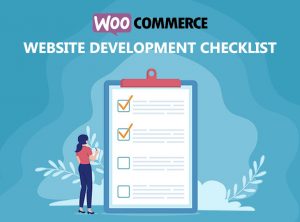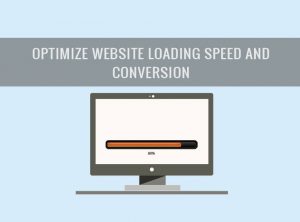

Marketers that succeed with search engine optimization do following things perfectly:1. First, they find out actionable techniques that award them outstanding results.2. Second, put that actionable techniques into execution with specific resources.
Lets, dive into ecommerce seo pro tips & techniques
To help you finding best e-commerce SEO techniques, we approached some of the top experts in the industry to tackle each core of e-commerce website optimization. These experts come from various SEO companies, and all have an everlasting interest in the art of organic search optimization. Check out their expert tips in this article (which you can feel free to download as PDF for future reference), All you need to do is click a name and jump to their tip.
Here’s Ecommerce SEO tip #1:

Avoid Using Duplicate Product Description
A really common mistake is to just use the standard, boilerplate product description used by every other website out there. This is common sense in many ways – if Google sees many sites all with the same description why would it return too many of these on page one? They all provide the same content so little value after the first link. However, if you can really add something unique be that your own expert commentary on the product or even user generated content like reviews then you can add real some value to the searcher.
By creating some useful, unique content you can often piggyback more authoritative sites that are just using the standard boilerplate product descriptions provided by manufacturers and this is often, way easier than building authority if you are a pure ecommerce website without a blog.
There are just so many mistakes made with SEO campaigns that it’s hard to know where to start but certainly, this is one common mistake and easy solution for ecommerce website owners looking to boost their organic traffic.

Deploy Unique Optimization Strategy on Ecommerce Site
The difference between search engine optimization for an e-commerce site and a lead generation site is actually pretty large. It all starts with the keyword assignment. With e-commerce sites, there is always the homepage, categories, subcategories and in some cases the subcategories go down to 7 to 8 levels deep. In each step of this navigation you need to make sure that you are optimizing for the correct keywords and themeing the site correctly. At the beginning of the keyword selection process, it is critical that you determine your top segments and the most important keywords for those segments. They should be represented in the top-level navigation and each of the sub-categories and each of those segments should be optimized for longer and longer tail keywords that relate to those top-level categories.
If you can get the keyword selection process correct, and you make sure to optimize standard on page elements correct, you will have a very good shot at ranking well and making a lot of money through Google search engine optimization. The only other important thing to keep in mind is that you need to have the products to support your optimization. If you try to build out a lot of sub-categories and all the products are the same there’s a good chance you could be hit by the panda update.

Moz Keyword Explorer Tool Help Finding Ecommerce Specific Search Terms
What you have to realize about ecommerce SEO is that in almost all product keywords you’re going up against Amazon and ebay so on standard, non-branded keywords you don’t stand a chance of ranking ahead of them. What you should be researching-and simply using the AdWords research tools is usually enough though I like using Moz keyword planner-is long tail keywords as well as branded keywords, places where those looking to sell on Amazon aren’t focusing.
This is where the difference between optimizing for Google and Amazon comes into play, and understanding each of them is crucial. Good Amazon sellers create listings with keyword stuffing, they’re not optimizing their content for informational search queries. Comparing two products, long tail keywords and dominating a lot of lower volume keywords to make up for the inability to compete on generic keywords with Amazon is the way to go.
On top of that, the brand is often not a part of the title in an Amazon listing and isn’t grouped together with the product keyword. So for instance you’re looking for a DJO knee brace you can rank ahead of Amazon if you do everything right simply because the page isn’t optimized for branded keywords.

Optimize Product Pages For More Specific Keywords
Remember that naming your products and product pages are about what your customers search, not what your product is about. Use Google Keyword planner to find the most searched terms pertaining to your product. Next, scout the ability to rank for those terms by eye-ing up the competition on the first page search results. If there is no chance of being on page 1 any time soon, consider a different keyword. For example, instead of “Red Nike Shoes” – a keyword that no doubt is extremely hard to get to page 1 for – focus in on “Red and Black Nike Cross-Fit Running Shoes” While this keyword may be searched a lot less, it may present a better opportunity in getting ranked just simply due to the lack of competition for such a specific keyword. But remember, if no one is searching “red and black nike cross-fit running shoes” then don’t label your product that, even if that’s exactly what your product is.

Link Building And Social Media Engagement Is Key To Success
I’d like to dive into the link building topic. I’m quite fond of link building because the process of getting a good link involves speaking to people, developing relationships and sometimes even making new friends. But i want to take a step forward. Google actually tracks if the link you’ve made is being clicked on at all. That’s why every time I ask myself:
– Is this link relevant to what’s happening on this page?
– If so, how can I make it more attractive?
Relating to this to a link building campaign for an Ecommerce website, I’d say we’re in a sea full of opportunities:
– provide a coupon code with the link
– explain that it’s a new product (with the link)
– build links for items to be pre-ordered
I’ve found it to be very useful. I like to scout for controversial social media posts where there’s much activity – mainly comments. The conversation has to be beyond a reasonable discussion for this to work. Then you can kinda “troll” with a link to your product, saying:
“I am selling a 2010 audi s4
SPECS
3.0L V6 Supercharger
Automatic 7-Speed
18 city / 28 hwy
Gasoline
AWD
Although this doesn’t feel right at first glance, you might reconsider if you think about it as publishing something that’s actually helpful for a change in those comments. It is entirely possible for your comment to be deleted but usually that’s not the case with that type of comment you’re providing something that’s refreshing and even funny. And if you did your homework, the people that are commenting will be a part of your audience.

Bring Best Selling Items On The Front Of The Store
My mom has an Etsy site on which she sells jewelry, and although she doesn’t own the eCommerce platform, it still allows for a certain level of control that, when optimized, increased her sales significantly.
One of the main things we did was we put her most favorited / best selling items on the front of her store, instead of the back where some of them were. Basically, put your best foot forward in terms of items, images, etc. For an online store, the first items to show is like your store window and you want it to look nice. Another thing we did was in each item description, at the bottom, we had a list of recommended items, which is something Amazon does for example. I don’t know if there is a way to automate this, but we manually added links to items we thought would be a good fit. This is an easy way to connect all the items of your store

Link Building Ideas for Ecommerce site
One of the best ways you can build links to your website, is by creating something so valuable that people can’t help but to talk about it. Some SEO specialists swear by infographics, as they’ve got the potential to go far more viral than a simple post, but I’ve recently been having a great deal of success with an older technique. Start a scholarship. This technique works best if you offer it on an annual basis, as all the educational websites will then keep your links up.
I like to tie it back to your industry, for example an ecommerce store selling sports gear could offer funding to help a student attend a college with a great running program, or an online jeweller could provide assistance for students to take an arts course
Of course, you’re going to need to do outreach to spread the word, we normally push these campaigns with Facebook Ads (targeting students) along with cold emails to the educational institutions where potential scholarship winners will attend
Soon, the .edu backlinks will start coming in, I’ve not found a better method to build high-quality .edu links.

3 Simple Ways Ecommerce Sites Can Link Build
Link building on an ecommerce site is often regarded as a serious challenge when in actuality it’s not as tricky as it seems. All you need to do to start link building is get creative with your approach with the help of these three valuable methods.
1) Pinterest
Pinterest is adept at engaging pinners with relevant content and driving referral traffic to your site, so always link images you upload to the product pages you want users to land at.
2) Create a blog
This is a great way to link to and discuss products you sell, providing readers with interesting content and links they will want to click through to find out more.
3) Establish an affiliate program
The more affiliate links your ecommerce site has, the better for SEO because websites are ranked by companies like Google. By having large sites link back to your site, you increase your site’s ranking and build brand awareness.

Link Building Tip for Ecommerce site
There is no doubt that link building for ecommerce sites is tough, but trying to get links to specific
pages can be a nightmare. This is made even harder if you want to use pure white hat tactics that
work in 2016.One method I have used before is image link building. Many owners of ecommerce websites take their own photos and spend time and money making them look awesome. Now if you make these images crawlable to Google, they will be found in image search – especially if they are well
optimized. They are likely to be picked up and used by other websites.
Just outreach to the sites and ask for an image link credit – 90% of the time you will get the link.

Content Marketing for keyword ranking
My best tip for eCommerce SEO would be to start a blog and create a content strategy that specifically targets long-tail keywords that are relevant for your business. Since it is highly difficult to rank for many popular one-word keywords, finding long-tail exact match phrases is a good way to begin ranking in search for keywords that you may not have targeted in your main website copy.
You can use a tool like Google AdWords Keyword Planner to measure search volume for certain topics and phrases, and create a strategy around targeting low competition keywords with okay search volume that take into account the phrases that your customers may be searching for. The ultimate goal is to create content that provides a ton of value and solves audience members’ biggest problems. Basically, in order for your blog to succeed, it needs to have high-quality content that your audience wants to read. If you focus on your customers’ search intent, invest some time into building out topic models for each post, and research which long-tail keywords are worth targeting, you should be able to come up with a solid content strategy that will help boost your SEO.

Quality Content on Product Pages
Ecommerce sites are the easiest to optimize technically, but the hardest to optimize content-wise. Most ecommerce sites tackle content by adding a blog, which is a great start. But even more important is to add good quality content to product pages. By good quality content, I mean content that does 3 things:
- Content people will want to share on Twitter and FaceBook, which is not a product picture and the item’s specs. You need those, but that’s not what makes the page shareable.
- Content the search engine spiders will love.
- Content that makes the page more saleable.
Think of interesting images, poetry (works with some types of products) or anything cute or funny that still places your product in a good light. If you can show each product with kittens, make that a theme across your pages. If you can create mini-Infographics on how to use some of your bigger ROI products, that could work, too. This is an area to let your imagination run wild.
Don’t be afraid to use humor; if national TV advertising can do that, so can you. And if people share that humor on FaceBook and Pinterest, your be building good SEO links and driving traffic.
Fun facts and useful tips are two other ways to get your content shared. Look at the shares on this page: http://thgmwriters.com/writing/ Can you guess why? Scroll down to see the graph. It’s no accident that the Pinterest shares are so high.

Tips to Research Keywords for Ecommerce Site
The best SEO strategy for an ecommerce site is content-driven. That means you need to identify keywords and content ideas to create content assets around. There are several ways to find content ideas:
1. Forums
Search “YOUR KEYWORD + forum” in Google to find forums in your industry. Go into the forums and look for possible content ideas.
2. SEMRush
Enter one of your competitor’s URLs into SEM Rush. You will then be able to see what keywords they are ranking for. Focus on longer tail keyword with low search volume.
UberSuggest
Enter your keyword into this tool and it show you all types of variations you can use for content.
Make sure your content asset doesn’t target more than 1-2 keywords.

SEO Mistake: Using Incorrect Product Page Meta Description
At least those that don’t sell their own products – is using only the manufacturer’s product description. When you do that, you’re basically creating a bunch of duplicate content, and this won’t rank well. When at all possible, take the time to write your own product description. If you can’t, then add to the content on that page however possible – product reviews, for example, or “how to use this product” information, etc.
On the opposite side is no content at all, just a product image and a price. From an SEO standpoint, this doesn’t give the search engines much to categorize. From a marketing standpoint, I have to ask, how exciting is that? Ooo a picture. What’s that? I don’t know, but it costs $10.00. It’s like the mystery product on every page.
If you’re going to create an ecommerce site, you have to stand out for search engines AND for visitors. If you think about added user value and work to give the visitor (potential buyer) a good experience, the search engines will follow.

SEO Mistake: Killing Off ‘Out Of Stock’ Pages
One common SEO mistake with ecommerce sites is killing off pages for items that are out of stock, discontinued or phased out. A 301 redirect would be a lot better or simply stating that it is ‘out of stock’ and when the supposed re-stock is. Small things like that in a massive ecommerce site make the difference between rankings. Learn More Here to avoid this issue

Competitors Research Is the Key
1. Less is more
Implement a method that has gained popularity under the name “pruning”. It basically means to deindex the pages that haven’t received any significant visitors in the last 4 weeks or a very high bounce rate. That will improve your overall site quality.
But it doesn’t stop there: you also have to find out why these pages were underperforming.
2. Look at the leaders.
. If you want to know what the best practices are and how to set up the SEO strategy for your e-commerce site, look at what the leaders in overall e-commerce (e.g. Amazon) or in your niche (e.g. Autotrader) do!
If they’re a true industry leader, chances are high they did a lot of testing for their layouts, so reverse engineer what how they structure and style their landing pages. Also, try to see what content they provide, what they write about etc. etc.
But remember: copying can only get you so far. To pass your competitors, you have to be better than them!”

Leverage Triple-fold Linkbait Strategy
If you are having a hard time creating solid content assets that can generate tons of traffic, shares and links, then this content strategy will definitely work for you.
Step 1:
Create a curated list of top experts in your industry. You can label it as “Top Industry Experts to Follow in 2016”. The main purpose of this content is to initiate conversations with these industry influencers/experts.
To provide real value, it is better to add your own takeaways to the post – i.e. letting your readers know about your favorite posts from blogs listed.
Then, you can use this exact email template when you reach out to them.
Hi [ NAME ],
I’m Venchito Tampon from [ BRAND NAME ]. We recently published a post featuring the top [ NICHE EXPERTS]. I’m so happy to tell you that you made our list because we’ve found your blog very useful to the community.
We also included a link to your website which can help you get some visitors or readers back to your blog. Feel free to comment or share the post.
Thank you,
STEP 2:
After two or three weeks, send a pitch to influencers you’ve listed in your first content, asking if they’ll be interested to give expert advices on a topic (one example is advices for beginner’s interior design experts).
If you don’t know where to contact them, check out this post to find their email addresses.
Use this outreach email copy if you want.
Hi [NAME],
I’m doing an expert round-up on my blog and I think many people who are new to [ TOPIC ] would love to know your answer to this question:
[ QUESTION ]
If you could send your response back by [ DATE ] as I plan to publish it on [ DATE ], that would be great. Let me know to which website you’d like us to link to.
Hoping to hear a feedback from you.
Thanks,
Venchito
Make sure your contributors are notified when the post is live. Send them a simple email, just like this.
Hi [ Name ],
Hope you’re having a great week! I wanted to let you know that I just published the round-up post. Here’s the link: [ LINK ]
Feel free to share it to your friends or readers.
Thanks for contributing!
STEP 3:
Your next content is to create an infographic based on the second content you’ve created (crowdsourced post). You can hire an infographic designer or you can do it yourself – whatever it is, make sure it is visually-appealing.
This three-fold linkbait content strategy can help you create linkable assets that will certainly attract natural links and positive mentions to your brand.
If you’re looking for more actionable tips, you can check out this guide on eCommerce link building strategies.
Venchito Tampon is the CEO and Co-Founder of SharpRocket, a content-based link building firm that provides white hat link building, infographic design and content writing services. He also write for his new motivational blog.
Amit

SEO Mistake: Improper Optimization of Product Titles
Many site owners do this fatal mistake of optimizing product title as per the name and not according to they type of product. It’s extremely important to optimize the product title as per the keywords people use to search. Use model numbers, brand names, product type and the things that people actually search for. No one is going to know the name of your product unless it starts with i (Pad, Phone).



Target User Intent Keywords with UGC
User-generated content or UGC is a very powerful tool for the SEO of your e-commerce website. UGC can be included in your product pages in the form of Product Reviews and Product Questions & Answers. By allowing your customers to leave reviews on your products and publicly asking questions specific to each product in your store, you’re not just increasing the content of your pages but targeting keywords specific to the user intent.
For example, you can have the dimensions of your product in the specifications section, but having a customer ask “What are the dimensions of [Product Name]?” would include this specific text on your page, allowing you now only to show up in the search results for that question, but could help you earn Google’s Answer Box, giving your website a preferred placement in the search results.
When it comes to product reviews, your product page should include the Schema.org rich snippets necessary to bring these into the search results. And if your ecommerce platform allows your users to include images with their product reviews, you could also be getting additional placements in Google’s image search results.

Ecommerce Onsite Optimization Tactics For SEO
- You have to determine the right landing pages for working upon, don’t have too many CTA buttons on your landing which makes the user experience horrible.
- Don’t adopt any unethical means of building links because it is going to harm your business website.
- The best aspect of link building strategy for e-commerce sites is internal linking of the pages, make sure you do interlinking of pages very well.
- Spend less on advertising and work more on educating the visitors about the products so that the rate of conversion is high.
- Customer Reviews are important in SEO – When the visitor visits the e-commerce site, user reviews left by the existing customers are used as a ranking signal by Google search engine algorithm. User reviews facilitate a higher rate of conversion and hence, increasing the product sale. When you create a unique description for the products, it will increase your search engine rankings.

Boost Your Ecommerce SEO with Video Marketing
Having video content on your store is undisputedly an excellent way to attract visitors. First off, the video marketing content already summarizes what your brand is all about. Incorporating a video on your web store can retain the visitors to getting messages concisely.
Your video marketing helps the search engine to evaluate whether your site provides relevant information to the readers. If your content is useful for them, it’s easy for the search engine to track your site and put it on the first page.
Moreover, the video presence allows visitors to stay longer in your store. This way, you can minimize the bounce rate on your site.
Here are some benefits of adding video marketing to your e-commerce SEO strategy.
- Boost SEO
- Rank better on the search engine
- Increase traffic
- Lower bounce rate
- Higher conversion rates
Therefore, it’s essential to create engaging content that captures the audience’s attention and maintain their interest. One of the best solutions is to incorporate video marketing in your store to deliver the information concisely and entertainingly. Besides, it helps improve your store SEO, which eventually leads to better ranking on search engine page results.

































